CapCut vs Premiere Pro: Which Video Editor Should I Choose?
Introduction to CapCut and Premiere Pro
Contents
- 1 Introduction to CapCut and Premiere Pro
- 2 Cost: Free vs Subscription-Based
- 3 User Interface Comparison
- 4 Editing Features and Tools
- 5 Performance and Speed
- 6 Platform Compatibility
- 7 Advanced Features: VR, 3D, and Multi-Cam Editing
- 8 Ease of Use for Beginners vs Professionals
- 9 Integration with Other Software and Plugins
- 10 Output Formats and Export Options
- 11 Community Support and Learning Resources
- 12 Case Studies: Who Uses CapCut vs Premiere Pro
- 13 Conclusion: Which Is the Best Choice for Your Needs
CapCut, developed by ByteDance, is an all-in-one video editing application primarily designed for mobile devices. It brings an array of powerful features wrapped in an intuitive interface, making it a popular choice for beginners and hobbyists. CapCut offers basic editing tools like trimming, cropping, and filters, alongside advanced features such as multi-layer editing, animation overlays, and keyframe video animation.
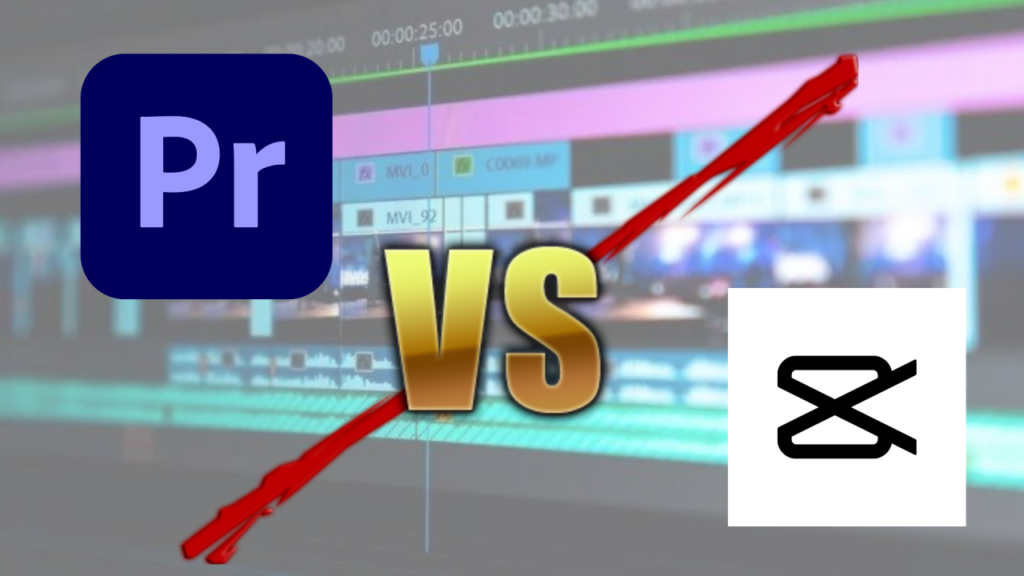
| Feature | CapCut | Adobe Premiere Pro |
|---|---|---|
| Platform | Mobile (iOS, Android), Web | Desktop (Windows, macOS) |
| Cost | Free with in-app purchases | Subscription-based (monthly/yearly) |
| User Interface | User-friendly, intuitive | Professional, more complex |
| Editing Tools | Basic editing tools, effects, filters | Advanced editing tools, multi-track editing |
| Audio Editing | Basic audio tools | Extensive audio editing capabilities with Adobe Audition integration |
| Templates | Pre-made templates available | Customizable templates, but fewer pre-made options |
| Collaboration | Limited collaboration features | Real-time collaboration options available |
| Export Options | Standard resolutions, limited formats | Wide range of export options, including high-quality formats |
| Performance | Optimized for mobile devices | High-performance on powerful desktops |
| Learning Curve | Low, easy for beginners | Steeper learning curve for beginners |
| Community Support | Growing community, tutorials | Large community, extensive resources and tutorials |
| Integration | Limited third-party integrations | Integrates with Adobe Creative Cloud apps and other tools |
| Features for Social Media | Designed for quick social media edits | Advanced features for professional video production |
If you want to know about the comparison of Capcut vs PicsArt then visit Picsart vs Capcut : Mod APK For Android Download (Pro,Premium Unlocked) !2024
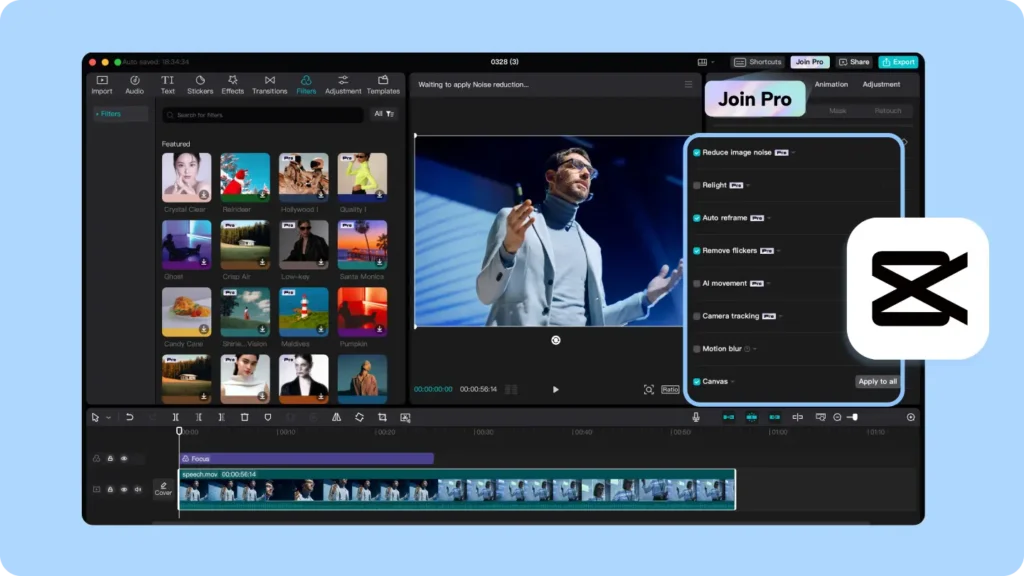
Key features of CapCut:
- Ease of Use: With its user-friendly interface, CapCut allows users to quickly learn and start editing.
- Mobile Optimized: Designed for mobile devices, it enables users to edit videos on the go.
- Free to Use: CapCut is available for free, making it accessible for everyone.
- Social Media Integration: Offers seamless integration with platforms like TikTok and Instagram.
- Effects and Filters: Includes a variety of visual effects and filters to enhance video quality.
- Music and Sound Effects: Features a library of free music and sound effects to add to videos.
- Basic Editing Tools: Provides tools like trimming, splitting, and merging clips.
Premiere Pro, an Adobe product, is a professional-grade video editing software used widely in the film, television, and content creation industries. It is part of Adobe’s Creative Cloud suite, offering seamless integration with other Adobe tools like After Effects, Photoshop, and Audition. Premiere Pro is known for its comprehensive toolset and flexibility, supporting a wide range of formats and resolutions.
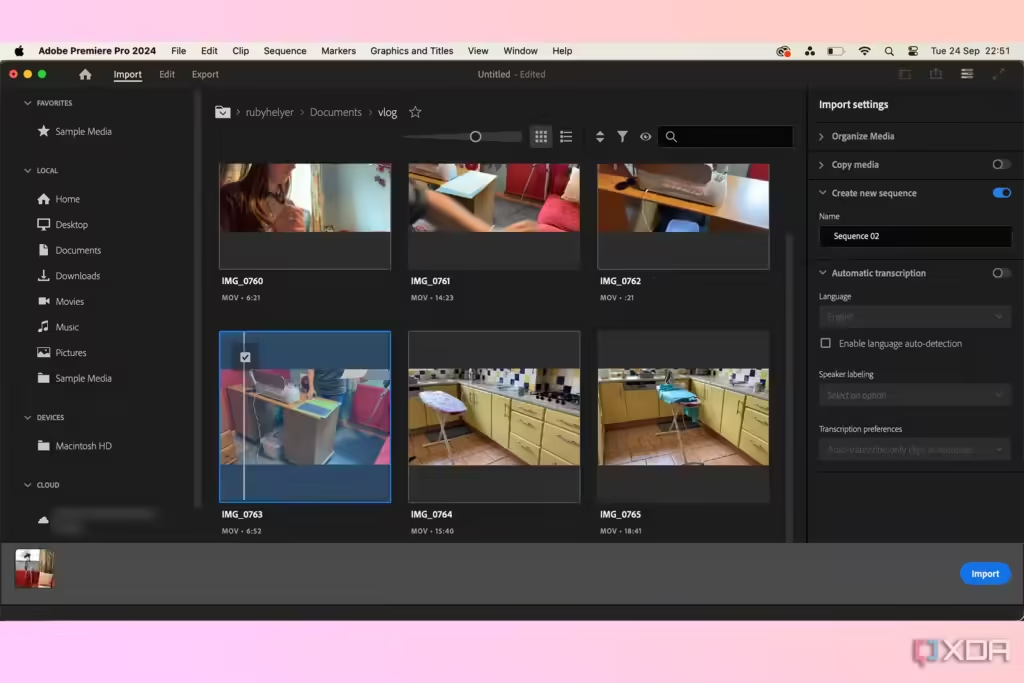
Key features of Premiere Pro:
- Professional-Grade Tools: Offers a vast array of advanced editing tools for intricate editing tasks.
- Cross-Platform Capability: Available for both Windows and macOS.
- Multi-Cam Editing: Enables editing footage from multiple cameras simultaneously.
- Dynamic Link with After Effects: Provides direct integration with Adobe After Effects for VFX work.
- Advanced Color Correction: Comes with Lumetri Color tools for in-depth color grading.
- 360-degree Video Editing: Supports VR and 360-degree video editing.
- Extensive Format Support: Compatible with numerous video, audio, and image formats.
In comparing CapCut and Premiere Pro, it is essential to understand the primary focus and target audience for each. CapCut is aimed at casual and novice editors, particularly those who prioritize mobility and social media content. In contrast, Premiere Pro targets professional editors who require advanced features and extensive control over their projects. This distinction sets the stage for a more detailed comparison of their capabilities and suitability for various editing needs.
Cost: Free vs Subscription-Based
When considering CapCut vs Premiere Pro, the pricing models for each software play a critical role in decision-making.
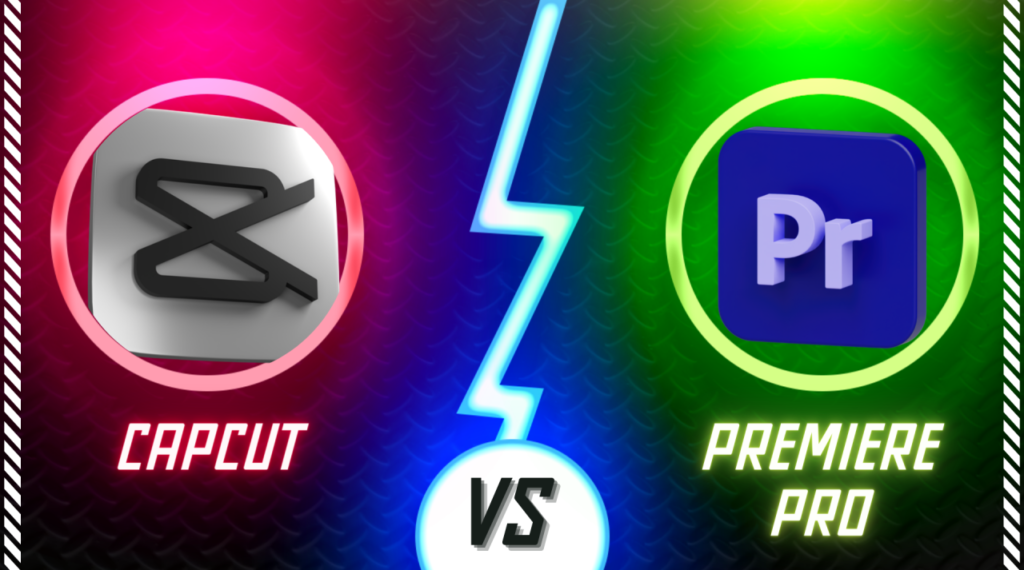
CapCut
CapCut is renowned for its user-friendly, cost-free availability:
- Free Version: CapCut offers a completely free version with access to a majority of its features. Users can:
- Edit videos without watermarks.
- Utilize various filters, transitions, and effects.
- Export videos in high resolution.
- Accessibility: There are no upfront costs, subscriptions, or hidden fees. This makes it an ideal choice for beginners and hobbyists.
- In-App Purchases: Optional in-app purchases allow users to buy additional resources like premium transitions or effects, but these are not obligatory for creating high-quality content.
Premiere Pro
In contrast, Adobe Premiere Pro follows a subscription-based pricing model:
- Monthly Subscription: Users pay a monthly fee to access the software. Adobe’s Creative Cloud offers:
- Regular updates and new features.
- Integration with other Adobe products like Photoshop and After Effects.
- Annual Subscription: An annual plan reduces the monthly cost. However, it requires a commitment, which may not be ideal for occasional editors.
- Creative Cloud Subscription: Offers a broader plan that includes multiple Adobe applications, catering to professionals who need a suite of tools.
- Free Trial: Adobe allows a 7-day free trial period. Users can test the software before committing financially.
Cost Analysis
- Beginner Editors: CapCut’s zero-cost model is highly appealing. It provides valuable editing tools without financial risk.
- Professional Editors: Premiere Pro’s comprehensive feature set may justify its cost. Businesses often benefit from its robust capabilities and seamless integration with other Adobe tools.
- Flexibility: CapCut wins for budget-conscious users and those looking for flexibility without subscriptions. Premiere Pro appeals to those who require advanced features and can invest in a high-end editing ecosystem.
Understanding these cost structures helps users align their editing needs with their budget, ensuring they choose the most cost-effective tool for their projects.
User Interface Comparison
Evaluating the user interface of CapCut and Premiere Pro reveals distinct differences tailored to specific user experiences and skill levels.
CapCut
CapCut focuses on simplicity and accessibility. It offers:
- Clean Layout: CapCut’s interface is uncluttered, with intuitive icons and a straightforward timeline.
- Drag-and-Drop Functionality: Users can easily import media and apply effects with a simple drag-and-drop method.
- Beginner-Friendly Tools: Basic editing tools like trimming, splitting, and adding transitions are readily available. Effects and filters are pre-configured to save time.
- Mobile Optimization: CapCut is optimized for mobile devices, making it easy to edit videos on the go. Its touch-friendly design suits tablets and smartphones.
Premiere Pro
Premiere Pro provides a robust interface for advanced users. Key features include:
- Customizable Workspaces: The interface supports multiple workspaces tailored to different stages of editing, from assembly to color grading.
- In-Depth Panels: Comprehensive panels for effects, audio, and graphics offer granular control. Users can dock, undock, and rearrange these panels according to their workflow.
- Advanced Timeline: The multi-track timeline allows for complex edits, including nested sequences and synchronized multi-camera editing.
- Integration with Adobe Suite: Seamless integration with Adobe Creative Cloud enables smooth transition of assets between Photoshop, After Effects, and Audition.
Key Differences
- Complexity: CapCut’s UI is designed for beginners, offering simplicity and ease of use. In contrast, Premiere Pro caters to professionals with its extensive array of tools and customization options.
- Accessibility: CapCut excels in accessibility, particularly on mobile platforms. Premiere Pro, primarily desktop-based, requires a more powerful system and has a steeper learning curve.
- Customizability: Users can expect minimal customization in CapCut, aimed at rapid, straightforward edits. Premiere Pro offers extensive customization, supporting detailed and nuanced projects.
Editing Features and Tools
When comparing CapCut and Premiere Pro, the variety and robustness of their editing features and tools come under scrutiny.
CapCut
CapCut offers a range of user-friendly editing features catering to those on a budget or beginners:
1. Easy-to-Use Interface
- Drag-and-drop functionality
- Simple navigation
2. Basic Editing Tools
- Trim, split, and merge clips
- Speed adjustment
- Basic filters and transitions
3. Text and Effects
- Wide selection of fonts and text styles
- Customizable subtitles
- Built-in effects and stickers
4. Audio Editing
- Background music library
- Voiceover recording
- Basic sound effects
Due to its straightforward design, CapCut simplifies the editing process, making it accessible to non-professionals.
Premiere Pro
Premiere Pro, on the other hand, is tailored for professional editors requiring advanced capabilities:
1. Advanced Interface
- Customizable workspaces
- Multicam editing
2. Professional Editing Tools
- Precision trimming and cutting
- Keyframe animation
- GPU-accelerated rendering
3. Powerful Effects and Transitions
- Seamless integration with After Effects
- Extensive transitions library
- Advanced color correction with Lumetri Color tools
4. Superior Audio Controls
- Adobe Audition integration
- Advanced audio mixers
- Multi-track editing
5. Collaboration and Workflow
- Team Projects for collaborative editing
- Adobe Creative Cloud integration
- Media management
Premiere Pro’s comprehensive suite of tools makes it the go-to choice for film and television professionals, enabling intricate workflows and superior results.
Feature Comparison
Ease of Use
- CapCut: Intuitive for beginners.
- Premiere Pro: Steep learning curve but highly efficient for experts.
Customization
- CapCut: Limited options, mainly preset effects.
- Premiere Pro: Extensive customization, from effects to workspace layout.
Integration
- CapCut: Basic mobile integration.
- Premiere Pro: Full integration with Adobe Creative Cloud, enabling seamless use of various Adobe applications.
Choosing between CapCut and Premiere Pro depends on the user’s specific needs and their level of editing expertise.
Performance and Speed
When evaluating the performance and speed of CapCut and Premiere Pro, several factors come into play, such as rendering times, system requirements, and general responsiveness of the software.
Rendering Times
Rendering times can significantly impact the editing workflow.
- CapCut: Known for its swift rendering capabilities, CapCut performs optimally on both mobile and desktop platforms. Its cloud-based rendering technology allows users to export videos quickly, even with complex edits.
- Premiere Pro: While Premiere Pro is considerably powerful, its rendering times can vary. Users often experience slower rendering speeds for high-resolution and complex projects without the right hardware configuration. However, it supports GPU acceleration to speed up the process.
System Requirements
The system requirements for both software are an essential consideration before selection.
- CapCut: CapCut is lightweight and runs smoothly on less powerful machines. Its mobile version operates efficiently on most smartphones without significant performance drops. The desktop version also requires minimal system resources.
- Premiere Pro: Premiering in this category, Premiere Pro is resource-intensive. It demands high-end hardware such as a multi-core processor, large RAM, and dedicated GPU for optimal performance. For 4K editing or higher, a top-tier system is necessary.
General Responsiveness
The overall user interaction experience is dictated by how responsive the software is during the editing process.
- CapCut: CapCut offers a more user-friendly interface with less complexity. Its response times are usually impressive, making real-time editing smoother.
- Premiere Pro: Premiere Pro’s responsiveness can be exceptional when using appropriately equipped systems. However, on lower-end systems, it may experience lag, particularly when handling numerous layers and effects.
In summary, while CapCut provides a faster, more lightweight experience suitable for less intensive tasks and users with minimal hardware, Premiere Pro offers robust capabilities at the expense of requiring substantial hardware resources. Each software excels in different categories, making performance tightly coupled with user needs and the hardware.
Platform Compatibility
Understanding platform compatibility is crucial when selecting between CapCut and Premiere Pro for editing needs. Both programs offer distinct advantages and limitations based on their supported devices and operating systems.
CapCut
CapCut is designed primarily for mobile devices, with a strong focus on iOS and Android platforms. It provides an intuitive and user-friendly interface optimized for touchscreen use, making it an ideal choice for on-the-go editing. However, CapCut has expanded its compatibility to include:
- Mobile Operating Systems
- Desktop Operating System
- Windows (via web version)
- macOS (via web version)
Premiere Pro
Adobe Premiere Pro, on the other hand, is a robust, professional-level video editing software designed for desktop and laptop use. It offers extensive features and powerful performance, though it requires more system resources. Premiere Pro supports:
- Desktop Operating Systems
- Windows
- macOS
Premiere Pro does not have a dedicated mobile app, unlike CapCut. Users seeking full editing capabilities on mobile devices might find this a limitation. However, Premiere Pro can be paired with Adobe’s mobile suite, such as Adobe Premiere Rush, allowing for some degree of mobile editing flexibility before finalizing edits on a desktop.
Key Considerations
- CapCut
- Best suited for mobile device users who need quick and accessible editing tools.
- Easily integrates with social media platforms, making it ideal for content creators focusing on short-form content.
- Premiere Pro
- Targets professional editors requiring advanced features and extensive control over editing projects.
- Suitable for high-performance desktops and laptops.
Conclusion
When evaluating platform compatibility, users must consider their primary devices and desired workflow. CapCut’s mobile-centric design offers portability and ease of use, whereas Premiere Pro’s desktop orientation provides advanced capabilities and professional-grade editing tools.
Advanced Features: VR, 3D, and Multi-Cam Editing
When it comes to VR, 3D, and multi-cam editing, both CapCut and Premiere Pro offer robust features that cater to different professional needs.
VR (Virtual Reality) Editing
Premiere Pro:
Premiere Pro provides an extensive toolset for VR editing. It supports both monoscopic and stereoscopic VR content. Users can leverage:
- A dedicated VR mode
- VR-specific effects and transitions
- Seamless integration with Adobe After Effects for advanced VR workflows
“The VR features in Premiere Pro are designed to offer comprehensive control over 360-degree video editing, making it a go-to for professionals.”
CapCut:
CapCut’s VR capabilities are more basic, focusing on user-friendly tools for creating immersive content quickly. Key VR features include:
- Basic VR video editing tools
- Pre-set VR effects and transitions
- Simplified user interface for quick edits
3D Editing
Premiere Pro:
Premiere Pro excels in 3D video editing with its integration capabilities with other Adobe Creative Cloud applications like After Effects and Photoshop. Key features include:
- Native support for stereoscopic 3D workflows
- 3D compositing tools
- Advanced 3D effects and transitions
“Premiere Pro’s 3D editing prowess extends from its deep integration with the Adobe ecosystem, allowing for a seamless editing experience.”
CapCut:
CapCut offers limited 3D editing features aimed at beginners and casual editors. Features include:
- Basic 3D transitions
- Simplified 3D composition tools
- Easy-to-use 3D effects
Multi-Cam Editing
Premiere Pro:
Premiere Pro shines in multi-cam editing with its advanced features, which include:
- Automatic synchronization of multiple camera angles
- Ability to edit up to 16 angles simultaneously
- Multicam source sequence creation
“In terms of multi-cam editing, Premiere Pro is ideal for complex projects like live events or multi-angle interviews.”
CapCut:
CapCut’s multi-cam editing capabilities are more limited, focusing on simplicity and speed. Features include:
- Basic multi-cam switching
- Easy synchronization of fewer angles
- Simplified interface for quick multi-cam edits
In summary, while CapCut provides accessible tools for VR, 3D, and multi-cam editing, Premiere Pro offers a comprehensive and professional-grade toolkit ideal for more complex projects.
Ease of Use for Beginners vs Professionals
When evaluating video editing software, ease of use is often a crucial factor for both beginners and professionals.
CapCut:
- User Interface: CapCut offers a clean and simple user interface that is intuitive for beginners. The layout is straightforward, eliminating the steep learning curve often associated with more advanced software.
- Tutorials and Support: CapCut includes built-in tutorials and prompts that guide new users through the basics, making it very user-friendly.
- Features: Though it comes with a range of features, these are designed to be easy to navigate. Common tasks like trimming, adding filters, and transitions are simplified for novice users.
- Accessibility: CapCut is a mobile-first application, making it accessible for users who may not have powerful computers. This adds to its ease of use, especially for those who prefer on-the-go editing.
Premiere Pro:
- User Interface: Adobe Premiere Pro presents a more complex interface that might overwhelm beginners. Its feature-rich environment is designed for more detailed and advanced editing.
- Learning Curve: Premiere Pro has a steep learning curve. New users may find it challenging initially, but the payoff is a highly versatile editing platform.
- Professional Features: For experienced editors, Premiere Pro offers advanced functionalities such as multi-camera editing, professional color grading, and motion graphics, which are indispensable for high-end video production.
- Customization: Premiere Pro allows a high level of customization. Professionals can tailor the workspace and workflows to fit their specific needs, making it ideal for complex projects.
Both tools offer tutorials, but Premiere Pro’s extensive options make its learning resources more in-depth and comprehensive—targeting users willing to invest time in mastering the software.
Summary
In summary, CapCut is highly accessible and easy to use, ideal for beginners and casual users. Premiere Pro, however, caters to professionals with its advanced features and customizable workflows, making it suitable for intricate editing projects. Both applications have their own strengths, depending on the user’s proficiency and editing needs.
Integration with Other Software and Plugins
When considering video editing software, compatibility with other tools and plugins is crucial for expanding functionality and streamlining workflows.
CapCut
CapCut is a relatively new player in the professional video editing market. As a result, its integration capabilities are more limited compared to established software like Premiere Pro.
- Primary Focus: Primarily geared towards content creators on TikTok and other social media platforms.
- Native Tools: Offers a range of built-in effects, transitions, and text tools but lacks extensive third-party plugin support.
- Compatibility: Limited compatibility with professional-grade software such as Adobe After Effects or DaVinci Resolve.
- Export Formats: Supports standard export formats suitable for social media but may not offer the breadth required for production-level projects.
- Cloud Integration: Provides cloud storage options for seamless access across devices, yet is less integrated with major cloud ecosystems like Adobe Creative Cloud.
Premiere Pro
Premiere Pro, part of Adobe Creative Cloud, offers robust integration capabilities designed for professional editors.
- Plugin Ecosystem: Extensive compatibility with third-party plugins that extend functionality. Plug-ins available for color correction, special effects, sound editing, and more.
- Adobe Suite Integration: Seamlessly integrates with other Adobe products such as Photoshop, Illustrator, and After Effects, making it easier to incorporate complex graphics and effects.
- Collaboration Tools: Features such as Team Projects enable multiple editors to work on the same project simultaneously in different locations.
- Export Options: Wide range of export formats catering to various platforms including film, television, and web.
- Cloud Services: Integrated with Adobe Creative Cloud, offering cloud storage, Adobe Stock, and access to a library of assets.
Comparison
- Ease of Use: CapCut’s integrations are simpler, well-suited for quick edits and social media content creation.
- Professional Capabilities: Premiere Pro excels with its extensive third-party plugin support and Adobe ecosystem integration.
- Collaboration and Workflow: Premiere Pro’s advanced features support more complex and collaborative projects.
- Purpose: CapCut is tailored for straightforward, social media-oriented editing, whereas Premiere Pro is built for in-depth, professional-grade editing tasks.
Output Formats and Export Options
CapCut and Premiere Pro offer a variety of output formats and export options, catering to different user needs and professional standards.
CapCut
CapCut, primarily designed for mobile and casual video editing, provides user-friendly export options.
- Format Selection: CapCut supports MP4 and MOV formats, ensuring compatibility with most social media platforms.
- Resolution Options: Users can export videos in different resolutions up to 4K, making it suitable for high-definition content.
- Frame Rate: CapCut allows exporting at various frame rates, including 24fps, 30fps, and 60fps, catering to different video styles.
- Compression Settings: Basic compression settings are available to balance quality and file size, which is ideal for quick social media uploads.
- Direct Sharing: It includes easy sharing options for platforms like TikTok, Instagram, and YouTube, streamlining the process for content creators.
Premiere Pro
Premiere Pro, aimed at professional video editors, offers extensive and customizable export features.
- Format Support: Premiere Pro supports an extensive range of formats, including MP4, MOV, AVI, WMV, and more, providing flexibility for various use cases.
- Export Presets: It includes a wide range of export presets for different platforms such as YouTube, Vimeo, and Facebook, ensuring optimal settings for each.
- Resolution Customization: Users can export videos in any resolution, from standard definition to 8K, catering to both online and broadcast standards.
- Frame Rate Variability: Complete control over frame rates from traditional 24fps to higher rates above 120fps, accommodating diverse project requirements.
- Advanced Encoding Options: Adobe Media Encoder integration allows for customized bitrate settings, color profiles, and multi-pass encoding, ensuring high-quality exports.
- Batch Processing: For large projects, Premiere Pro enables batch export, saving time and effort by processing multiple exports simultaneously.
- Professional Codecs: Supports professional codecs such as ProRes, DNxHD, and HEVC, essential for high-end video production and broadcasting.
The differences in output formats and export options between CapCut and Premiere Pro highlight the tools’ respective focuses—CapCut for ease and quick sharing, and Premiere Pro for deep customization and professional-grade quality.
Community Support and Learning Resources
Both CapCut and Premiere Pro have various levels of community support and learning resources available, which can be crucial for users at all skill levels. Here’s a look at what each offers:
CapCut
CapCut is relatively new on the scene compared to Premiere Pro, but it has quickly built a solid foundation of support and educational material. The following resources are available:
- In-App Tutorials: CapCut offers a series of built-in tutorials that guide users through basic and advanced features.
- User Forums: A growing number of user forums and online communities provide assistance, share tips, and offer project ideas.
- Social Media Channels: Platforms like YouTube and TikTok host numerous user-created tutorials and content showcasing how to utilize CapCut.
- Official Documentation: CapCut has an official guideline and help section available online, covering a broad range of topics from introductory guides to detailed feature explanations.
Premiere Pro
Premiere Pro, being a cornerstone Adobe product, boasts an extensive array of learning resources and an established community. Here are some key resources:
- Adobe Support: Adobe provides a comprehensive support ecosystem, including live chat, forums, and a knowledge base.
- Lynda.com/LinkedIn Learning: Numerous professional courses and tutorials are available, aiding users in mastering the software.
- YouTube Channels: Many experts and enthusiasts share in-depth tutorials, covering everything from basic edits to complex workflows.
- Books and eBooks: A plethora of published books provide detailed guidance and tutorials for all skill levels.
- Community Forums: Adobe’s official forums and other online communities offer a platform for asking questions, sharing knowledge, and finding solutions.
Accessibility
When considering how accessible these resources are, both platforms offer unique advantages.
- CapCut is more approachable for beginners due to its intuitive interface and the nature of its community-driven content.
- Premiere Pro offers a rich library of professional-grade resources, but it may require a steeper learning curve.
Both editing programs come with robust support systems, but the choice between them depends on the user’s specific needs and familiarity with video editing concepts.
Case Studies: Who Uses CapCut vs Premiere Pro
CapCut Users
Social Media Influencers:
- Social media influencers frequently use CapCut for creating quick, engaging content specifically tailored for platforms like TikTok and Instagram Reels.
- Its lightweight and mobile-friendly nature allows influencers to edit videos on the go without needing a complete workstation.
Beginner Content Creators:
- Newcomers to the world of video editing often choose CapCut due to its user-friendly interface and minimal learning curve.
- The free access with powerful features attracts beginners who want to create professional-looking videos without monetary investments.
Travel Bloggers:
- Travel bloggers often rely on CapCut because of its powerful yet compact design, making it ideal for editing videos while traveling.
- The app’s ability to function offline ensures that creators can edit in remote locations where internet connectivity may be limited.
Short-Form Video Enthusiasts:
- Enthusiasts who focus on short-form videos including memes, tutorials, and quick tips prefer CapCut for its speed and ease of use.
- The tools and templates offered by CapCut significantly reduce the time required to edit and publish videos.
Premiere Pro Users
Professional Filmmakers:
- Professional filmmakers consider Premiere Pro an industry standard due to its extensive feature set and compatibility with a broad range of plugins and high-end hardware.
- Premiere Pro’s timeline-based editing, multi-camera support, and complex video effects make it suitable for producing full-length movies and documentaries.
Advertising Agencies:
- Advertising agencies utilize Premiere Pro for creating high-quality advertisements and promotional materials.
- The need for integration with other Adobe Creative Cloud products like After Effects and Photoshop makes Premiere Pro the go-to software for sophisticated ad campaigns.
Educational Institutions:
- Colleges and universities offering film and media studies courses often include Premiere Pro in their curriculum.
- Students are trained on Premiere Pro to prepare for careers in professional video production, broadcasting, and digital media.
Corporate Video Production:
- Businesses and corporations that require polished video presentations, webinars, and training material often use Premiere Pro.
- Its collaborative features like Team Projects help large teams work together efficiently, a necessity for corporate environments.
YouTubers and Streamers:
- Serious YouTubers and streamers favor Premiere Pro for its advanced editing tools, which are crucial for high-quality content creation.
- The software supports a wide range of video formats and export options suitable for various online platforms, including YouTube and Twitch.
Compared to CapCut, Premiere Pro is preferred by users who require more advanced features and greater control over their editing projects.
Conclusion: Which Is the Best Choice for Your Needs
CapCut and Premiere Pro serve different user segments with their unique features and capabilities. Understanding the specific needs and learning curves associated with each platform can help users make an informed decision.
CapCut: Best For
- Beginners: With its intuitive interface, CapCut is suited for users with little to no editing experience.
- Mobile Users: Ideal for on-the-go editing, CapCut works well on smartphones and tablets.
- Content Creators: Especially popular with TikTokers and YouTubers who need quick, engaging video edits.
- Budget-Conscious Users: Completely free, making it accessible to everyone.
Premiere Pro: Best For
- Professional Editors: Offering a range of advanced editing features, Premiere Pro caters to professional videographers and editors.
- Complex Projects: Best for high-stakes, large-scale projects requiring advanced effects, transitions, and extensive video formats.
- Collaborative Workflows: Suitable for teams using Adobe Creative Cloud for collaborative projects.
- Cross-Platform Compatibility: Works seamlessly on both Windows and macOS.
Key Factors to Consider
- Usability:
- CapCut: User-friendly, minimal learning curve.
- Premiere Pro: Steeper learning curve but highly powerful.
- Cost:
- CapCut: Free.
- Premiere Pro: Subscription-based, part of Adobe Creative Suite.
- Features:
- CapCut: Basic editing, filters, transitions.
- Premiere Pro: Advanced editing, extensive effects, multi-camera editing, color grading.
- Support and Community:
- CapCut: Limited support, smaller community.
- Premiere Pro: Extensive support, large community, numerous tutorials available.
- Integration:
- CapCut: Standalone app, limited integration.
- Premiere Pro: Integrated with other Adobe products for a streamlined workflow.
FAQs: CapCut vs. Adobe Premiere Pro
1. What is CapCut best used for?
CapCut is best for quick and easy video editing on mobile devices, particularly for social media content like TikTok, Instagram Reels, and YouTube Shorts. It offers user-friendly features that allow users to create engaging videos with minimal effort.
2. Is Adobe Premiere Pro suitable for beginners?
While Premiere Pro has a steeper learning curve, it offers a wealth of features that can be advantageous for beginners who are willing to invest time in learning. Adobe provides extensive tutorials and resources to help new users get started.
3. Can I use CapCut on a computer?
CapCut primarily targets mobile platforms (iOS and Android) and has a web version. However, it lacks the comprehensive features and power of desktop software like Adobe Premiere Pro.
4. What are the main differences in pricing between the two?
CapCut is free to use but offers in-app purchases for advanced features. In contrast, Adobe Premiere Pro operates on a subscription model, requiring monthly or yearly payments.
5. Which software is better for professional video editing?
Adobe Premiere Pro is the industry standard for professional video editing. It provides advanced tools and flexibility that cater to filmmakers, content creators, and editors.
6. Can I collaborate with others using these platforms?
CapCut has limited collaboration features, while Adobe Premiere Pro supports real-time collaboration, especially within the Adobe Creative Cloud ecosystem.
7. Are there any export limitations with CapCut?
CapCut offers standard export resolutions and formats, suitable for social media. Adobe Premiere Pro provides a wider range of export options, including high-quality formats for professional distribution.
Conclusion
In summary, CapCut is an excellent choice for casual users and social media enthusiasts who seek a simple, mobile-friendly editing solution. Its intuitive interface and quick editing features make it accessible for anyone looking to create engaging content.
On the other hand, Adobe Premiere Pro is the go-to software for professionals and serious creators. With its extensive tools, flexibility, and integration with other Adobe products, it caters to complex editing needs and higher-quality outputs.
Choosing between CapCut and Premiere Pro depends largely on the user’s specific needs, skills, and the complexity of their projects. While CapCut offers simplicity and accessibility, Premiere Pro provides a comprehensive suite for professional-grade video production.

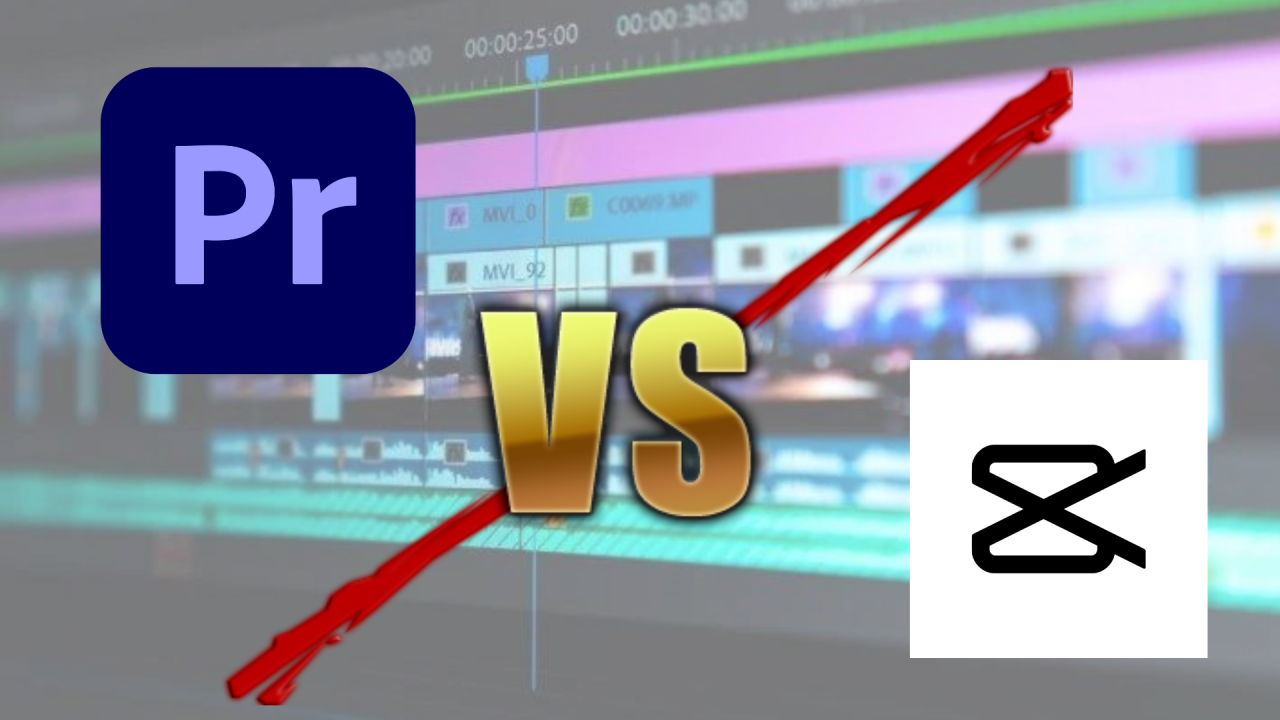

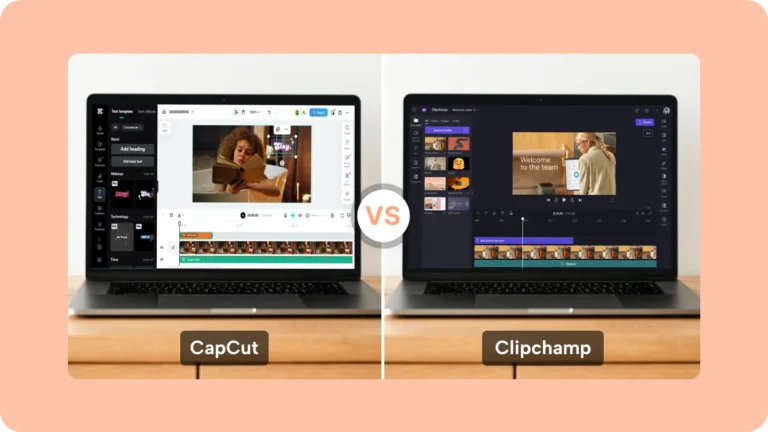
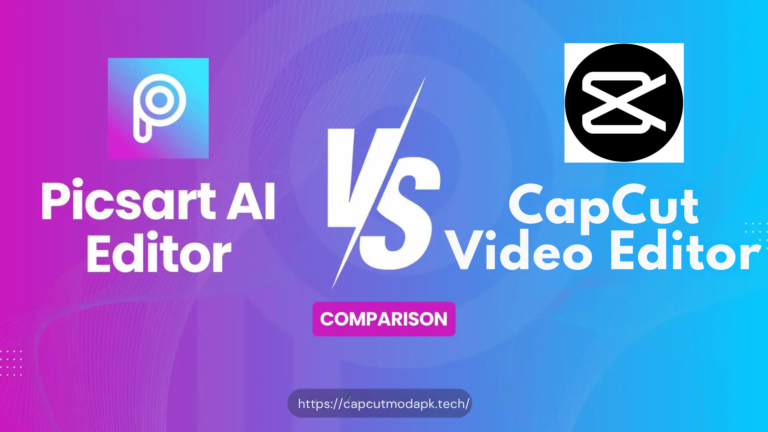

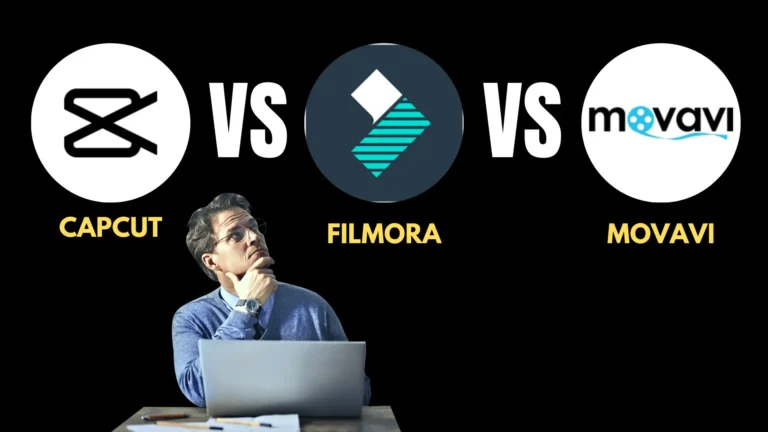
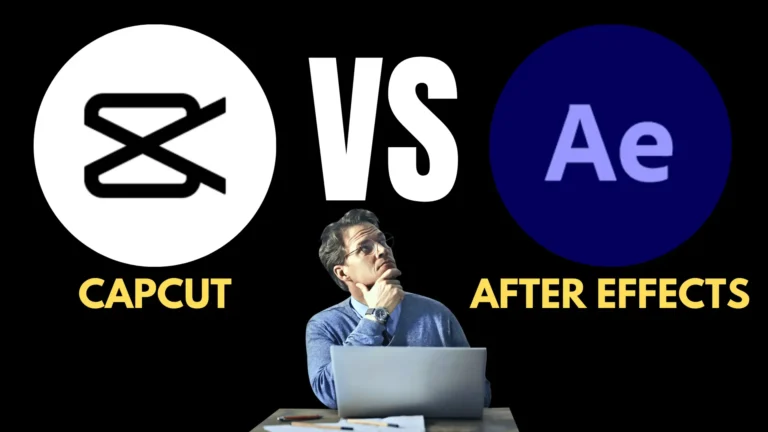
One Comment